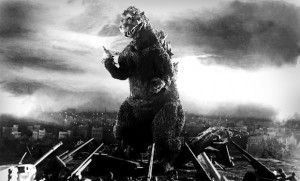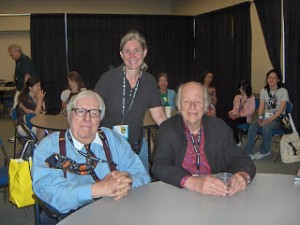David A.R. White (“Evening Shade”) is the founder/writer/director of Pure Flix, which makes films that “uplift and inspire the human spirit.” He graciously took time to answer my questions about making faith-based films and what he has learned. New films from Pure Flix include “God’s Not Dead” with Kevin Sorbo and “Mom’s Night Out,” an uproarious comedy starring Sarah Drew, Trace Adkins, and Patricia Heaton.
Why did you create Pure Flix? What is your goal? Who is your intended audience?
We created Pure Flix to make uplifting and inspiring content on a consistent, ongoing basis, so audiences would truly have an alternative to what Hollywood puts out. Pure Flix produces faith and family films, so the audience is the entire family.
What are the most important lessons you learned from the writers and directors you worked with on television series like “Evening Shade?”
Evening Shade was such an eye-opening experience. I was 19 when I went on that show. I had barely had an acting class. So as Burt Reynolds continued to bring me back for the next three years, I learned so much from him and all the other legends that were on the show. People like Hal Holbrook, Charles Durning, Michael Jeter, Marilou Henner, etc. One of the biggest things I walked away with was how Burt loved to work with his friends. Most of these people he had done movies with for 20+ years, and I wanted to do the same. Which is why in a lot of our films you see a lot of recognizable faces, good friends of mine from the last 20 years.
was such an eye-opening experience. I was 19 when I went on that show. I had barely had an acting class. So as Burt Reynolds continued to bring me back for the next three years, I learned so much from him and all the other legends that were on the show. People like Hal Holbrook, Charles Durning, Michael Jeter, Marilou Henner, etc. One of the biggest things I walked away with was how Burt loved to work with his friends. Most of these people he had done movies with for 20+ years, and I wanted to do the same. Which is why in a lot of our films you see a lot of recognizable faces, good friends of mine from the last 20 years.
In the 50’s and 60’s, Hollywood studios were making films like “The Greatest Story Ever Told” and “King of Kings” and “A Man Called Peter.” Why is it hard to get films like that made now?
Well this year would probably be the year to do that, as they are calling this the “Year of the Bible”. I think there is always an ebb and flow in Hollywood about what is current. And as people are responding to more and more life-affirming content, I think we will see more and more of those type of movies.
“Noah” has not opened yet and it is already controversial as some Christian groups say it departs from the Bible. Is it hard to reach Christian audiences with big-budget movies directed at the mainstream?
I think it’s hard because the filmmakers don’t really believe in what they are making. So for them, accuracy is not a priority in the movie and it becomes something else.
Can mainstream films deliver a spiritual message? Can Pure Flix films reach an audience that is not church-going?
Yes, on both questions. Pure Flix makes evangelistic films, but we also make family films. I think the viewer wants to see quality entertainment that the whole family can watch, and many nonbelievers watch our films because they can watch with their family and young kids.
Your films often have a refreshing sense of humor. Why is that important?
I love comedy. Which is why I keep trying to bring comedies out like “Me Again”, “Marriage Retreat”, “Holyman Undercover”. I think it’s important we don’t take ourselves too seriously. We need to be able to laugh at ourselves; it’s very disarming and works wonders in relationships.

and King Kong vs. Godzilla
.


